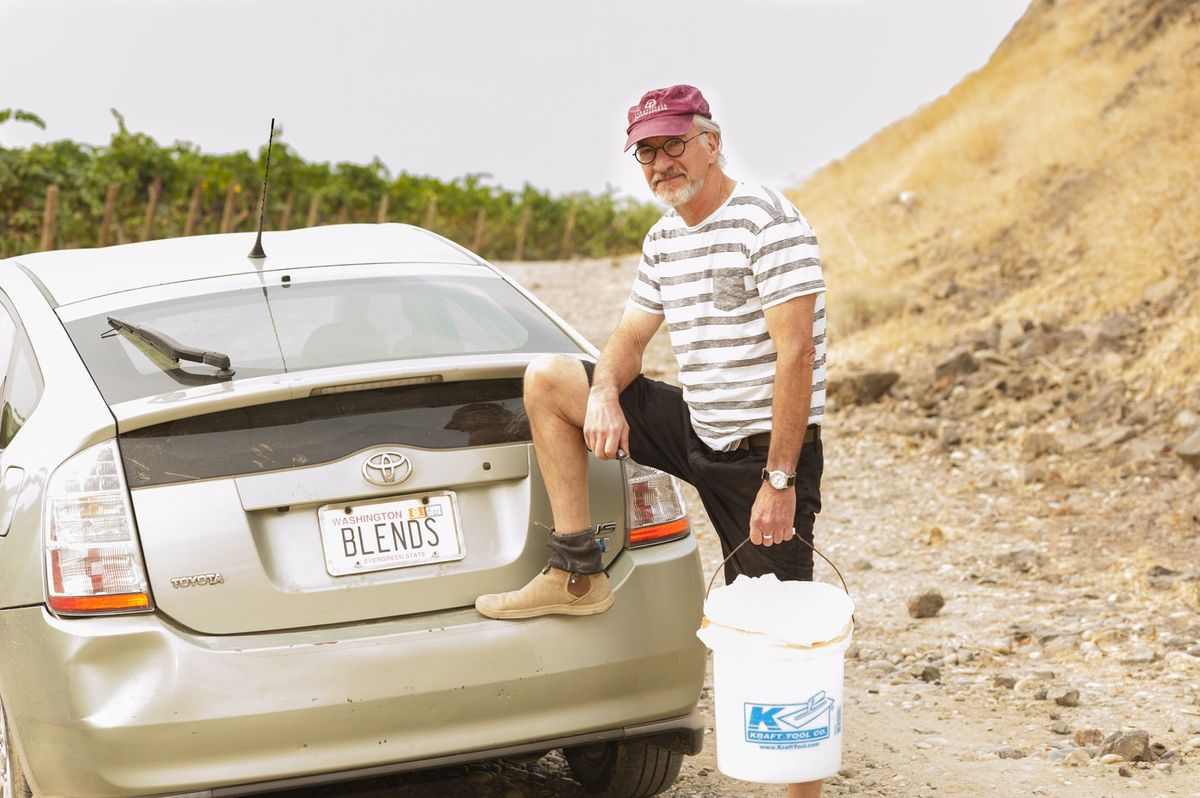
Every few years, Wine Press Northwest magazine conducts an overview of fortified wines produced in our region. Each time, the tasting provides a delicious contrast of classic Old World approaches with some eclectic angles found in the New World.
And yet, there is some consistency at both ends of the spectrum, which is great news for the consumer. That means when you find a producer’s style that is just right for that sweet tooth, you may have a friend for life.
Once again, Earl Jones at Abacela in Southern Oregon’s Umpqua Valley and Brian Carter Cellars in Woodinville, Wash., led the way in their work with traditional port-style bottlings featuring grapes native to Portugal.
And in the Yakima Valley, there’s David Padgett of Horizon’s Edge Winery and Maison de Padgett, whose fortified efforts featuring ingredients such as gewürztraminer, orange muscat and coffee – yes, coffee – returned three gold medals.
What is a fortified wine? Fortification comes when brandy or similar spirits are introduced during the fermentation process. The brandy’s lofty alcohol kills the yeast, which stops fermentation and yields a sweet, higher-alcohol wine often served after dinner.
The style originated in Portugal, home to some of the world’s finest dessert wines, and similar wines are made in Madeira, a former Portuguese colony off the coast of Morocco.
This past summer, 48 Northwest wineries submitted samples for Wine Press Northwest’s first large-scale judging of fortifieds since 2015. Abacela winemaker Andrew Wenzl earned four Outstanding ratings for the Jones family, including the Abacela 2014 Estate Port, which topped the judging.
That wine features five of the traditional grape varieties used to produce Port – tempranillo, tinta amarela, bastardo, tinta cão and touriga naçional. However, the two oldest gold-medal winners by Abacela, the 2001 Estate Port and 2008 Estate 10-year-old Tawny Port, relied on the Portuguese clone of tempranillo called tinta roriz.
“I love the older vintage-style ports with vintage dates; the trouble is waiting for them to mature,” Jones says. With the nights turning chilly across the Pacific Northwest, these wines are an ideal companion in the evening with a fireplace nearby and a plate of hazelnuts and Stilton cheese within reach.
Below are a few of the top examples that received a rating of Outstanding, the equivalent of a gold medal, from the Wine Press Northwest panel. For the complete list of winners, visit winepressnw.com or pick up a copy of the fall 2020 issue. And look for these bottles via your favorite wine merchant, or contact the winery directly.
Abacela Winery 2015 Estate Port, Umpqua Valley, $25: With the 2014 vintage in short supply, here is the baby brother, which also earned an Outstanding in judging. The five Portuguese varieties come into play, and they yield perfume-y aromas of Marionberry, Simpkin’s Blackcurrant Drops, cherry soda, cedar and dried herbs.
The fluid is dense, yet friendly, with dark cherry, plum and nutmeg. Its immense structure bodes well for cellaring, finishing with cocoa powder and blackcurrant.
Maison de Padgett Winery NV Smoking Gun Coffee Port-style, Rattlesnake Hills, $25: Padgett’s latest fortified effort involving coffee does not disappoint. He uses chardonnay and muscat canelli as the base. Coffee extract takes it to another dimension.
Think of a Heath bar, almond roca and a bowl of Frosted Mini-Wheats, along with hazelnut coffee and a box of Cracker Jack. It is rich, complex and fascinating. Pour it over French vanilla ice cream, or sneak a jigger into your Sunday morning coffee.
Brian Carter Cellars 2015 Opulento Dessert Wine, Yakima Valley, $22: Carter, a magnificent blender, works with touriga naçional, souzao, tinto cão and tinta roriz and invested 20 months of barrel aging.
Aromas of blackberry, raisin, coffee, hoisin sauce and leather lead to richly layered flavors of blueberry, plum sauce and cherry. Acidity keeps the fruit alive and balances the 11% residual sugar. Sandy tannins, combined with cocoa, make for a supple finish.
M.W. Whidbey’s 2017 Washington Port, Columbia Valley, $17: The first Whidbey’s Port from Ste. Michelle Wine Estates was made in 1984 at the then-young Columbia Crest facility by Doug Gore, who used cabernet sauvignon from now-historic Cold Creek Vineyard. More than three decades later, cab still forms the base of this lush and opulent sweet wine.
Now, 14 Hands winemaker Keith Kenison oversees the program, which spends 36 months in oak barrels. Perfume-y aromas of cotton candy, plum, blackberry and marshmallow lead to a gorgeous structure that picks up cherry, chocolate and vanilla along the way to a sweet and remarkably smooth finish.
Eleven Winery 2014 Angelica Pinot Grigio, Washington, $20: Puget Sound producer Matt Albee devoted this seven-barrel lot of pinot gris to four years in neutral oak, and the experiment came out on the other side as a remarkable take on California’s historic template of white fortified wines by the early Franciscan missionaries.
Aromas of caramel, toffee and Spanish flan transition to early flavors akin to a cream sherry and lemon. That tangy and citrusy profile balances the residual sugar (11%) and the midpalate of maple syrup and caramel.
There’s ground nutmeg, and the alcohol pokes out in the finish, but not enough to distract from the lemony theme. Enjoy it with poached pears, mild blue cheese or a slice of pumpkin pie.
Eric Degerman operates Great Northwest Wine. Learn more about wine at greatnorthwestwine.com.
"sweet" - Google News
October 21, 2020 at 12:03AM
https://ift.tt/35jQpeX
Great Northwest Wine: Fortified wines provide sweet warmth on chilly nights - The Spokesman-Review
"sweet" - Google News
https://ift.tt/2PcPlld
https://ift.tt/2KSpWvj
Bagikan Berita Ini
















0 Response to "Great Northwest Wine: Fortified wines provide sweet warmth on chilly nights - The Spokesman-Review"
Post a Comment